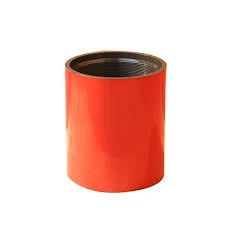- Afrikaans
- Albanian
- Amharic
- Arabic
- Armenian
- Azerbaijani
- Basque
- Belarusian
- Bengali
- Bosnian
- Bulgarian
- Catalan
- Cebuano
- Corsican
- Croatian
- Czech
- Danish
- Dutch
- English
- Esperanto
- Estonian
- Finnish
- French
- Frisian
- Galician
- Georgian
- German
- Greek
- Gujarati
- Haitian Creole
- hausa
- hawaiian
- Hebrew
- Hindi
- Miao
- Hungarian
- Icelandic
- igbo
- Indonesian
- irish
- Italian
- Japanese
- Javanese
- Kannada
- kazakh
- Khmer
- Rwandese
- Korean
- Kurdish
- Kyrgyz
- Lao
- Latin
- Latvian
- Lithuanian
- Luxembourgish
- Macedonian
- Malgashi
- Malay
- Malayalam
- Maltese
- Maori
- Marathi
- Mongolian
- Myanmar
- Nepali
- Norwegian
- Norwegian
- Occitan
- Pashto
- Persian
- Polish
- Portuguese
- Punjabi
- Romanian
- Russian
- Samoan
- Scottish Gaelic
- Serbian
- Sesotho
- Shona
- Sindhi
- Sinhala
- Slovak
- Slovenian
- Somali
- Spanish
- Sundanese
- Swahili
- Swedish
- Tagalog
- Tajik
- Tamil
- Tatar
- Telugu
- Thai
- Turkish
- Turkmen
- Ukrainian
- Urdu
- Uighur
- Uzbek
- Vietnamese
- Welsh
- Bantu
- Yiddish
- Yoruba
- Zulu
High-Quality Coupling Tube Fittings | Reliable & Durable Solutions
Understanding Coupling Tube Fittings A Comprehensive Guide
When it comes to fluid and gas transfer systems, coupling tube fittings play a pivotal role in ensuring secure and efficient connections in various applications. These fittings are designed to create a leak-proof seal between two tubes, enabling seamless fluid transfer in hydraulic and pneumatic systems. By understanding the types, advantages, and applications of coupling tube fittings, engineers and technicians can make well-informed decisions when selecting components for their systems.
Types of Coupling Tube Fittings
Coupling tube fittings come in various styles and materials, each suited to specific applications. The most common types include
1. Compression Fittings These fittings consist of a nut, a ring (also known as a ferrule), and a body. When the nut is tightened, the ferrule is compressed, creating a tight seal around the tube. Compression fittings are widely used due to their ease of installation and ability to handle high-pressure environments.
2. Push-to-Connect Fittings As the name suggests, these fittings allow for quick and easy connections without the need for tools. A simple push action secures the tube in place. Push-to-connect fittings are often used in applications requiring frequent assembly and disassembly.
3. Welded Fittings These fittings are permanently attached to pipes or tubes by welding. This type of coupling provides a robust connection but lacks the flexibility of other fittings for disassembly. Welded fittings are commonly used in high-pressure and high-temperature applications.
4. Flared Fittings Flared fittings involve creating a cone-shaped flare at the end of the tube that fits into the fitting. When tightened, the connection becomes secure and leak-proof. These fittings are particularly useful in automotive and refrigeration applications.
Advantages of Coupling Tube Fittings
The use of coupling tube fittings offers numerous benefits
- Leak Prevention A well-designed coupling fitting creates a reliable seal that prevents leaks, which is crucial for maintaining system integrity and safety.
coupling tube fitting

- Versatility Available in various materials such as brass, stainless steel, and plastic, coupling tube fittings can accommodate different environments and fluid types.
- Ease of Installation Many coupling fittings are designed for quick and easy installation, reducing downtime and labor costs in industrial settings
.- Reusability In many cases, coupling fittings can be reused, making them a cost-effective option, especially in systems that require frequent modification or maintenance.
Applications of Coupling Tube Fittings
Coupling tube fittings find use in a myriad of industries, including
- Automotive Essential for fuel lines, air conditioning, and hydraulic systems.
- Aerospace Used in fuel and hydraulic lines for aircraft, where reliability and safety are paramount.
- Manufacturing Integral to fluid transfer systems in machinery and production lines.
- Medical Devices Employed in devices such as respirators and intravenous systems, where precise fluid control is necessary.
In conclusion, coupling tube fittings are vital components in maintaining the efficiency and safety of fluid systems across various industries. By understanding their types and applications, professionals can select the most suitable fittings for their specific needs, ultimately enhancing the performance and reliability of their systems.
-
Tubing coupling plays a significant role in the chemical industryNewsApr.03,2025
-
The Importance of Tubing Crossover in Various Industrial FieldsNewsApr.03,2025
-
The characteristics and important role of Tubing Pup JointNewsApr.03,2025
-
Characteristics and functions of Pup jointNewsApr.03,2025
-
Characteristics and Functions of Pup Joint PipeNewsApr.03,2025
-
Application of Coupling Casing in Various ScenariosNewsApr.03,2025







